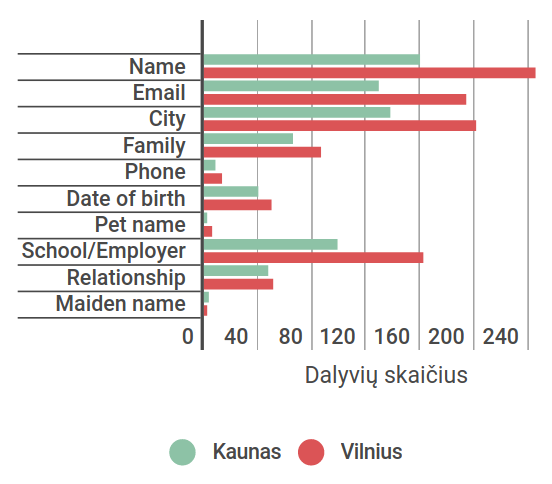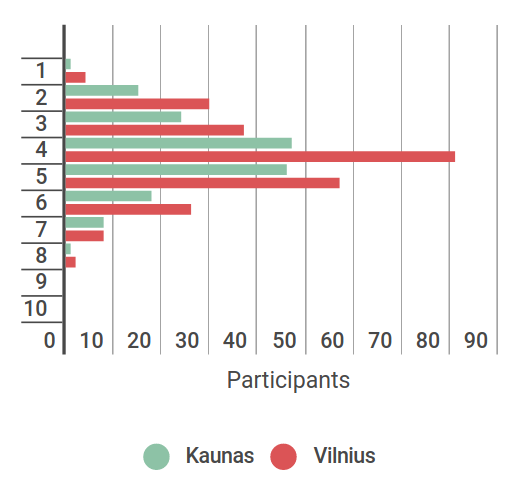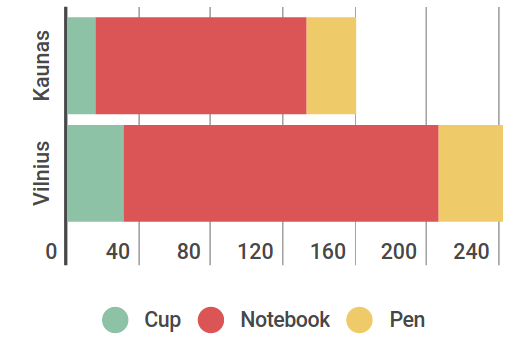Rosita Bitinaitė, Arūnas Liuiza
Availability of Personal Information on the Internet
Problem




Methodology
- Visitor is invited to take part in a prize draw;
- Participant scans QR code;
- Participant signs up with Facebook account;
- Participant is asked to come back in 20 minutes;
- User data is read via Facebook API;
- Student team adds additional data via Google searches;
- Visitor is presented with a report and a prize.
„Studijos 2018“ Kaunas/Vilnius


Data points
-
First and last name
-
E-mail address,
-
Phone number,
-
Date of birth,
-
Place of residence (city, address),
-
Family members,
-
Relationship status,
-
School / Employer,
-
Name of a pet,
-
Mother’s maiden name.
The RESULTS
688 visitors
405 participants

Information points

Number of Points Found
Prizes

Conclusions
-
90 percent of participants share more that 3 pieces of information available online publicly or with minimal permissions.
-
58.9 percent of approached visitors were willing to give access to it for a chance of a fairly cheap and simple reward.
-
Least sensitive data – name, email, city – were shared the most (more than 70 percent of the cases).
-
Most sensitive data, like popular security questions (pet’s name, mother’s maiden name) were among the best guarded, but students still managed to find those in at least 7 cases.
Thanks! Questions?
klausk@aruno.lt
slid.es/arunas/privacy

